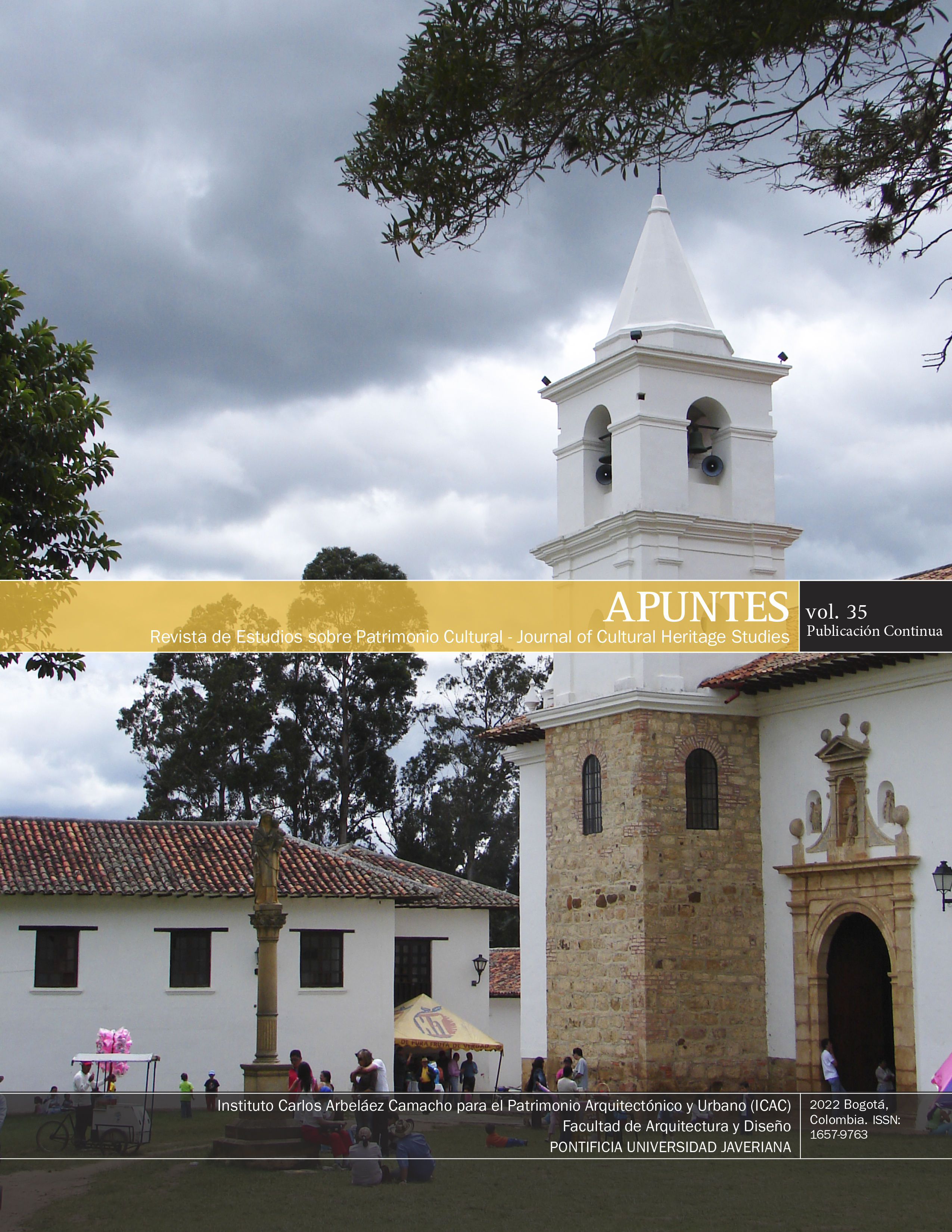Abstract
The article analyzes the Monument to the Unknown Political Prisoner that the architect Max Bill proposed in response to the international sculpture competition organized in 1952 by the Institute of Contemporary Arts in London. In today's city, subject to constant change, it seems pertinent to turn our eyes to those projects that have proposed meeting spaces. Much has been lost with the pandemic. The networks have tried to put us in contact but it has been a vain attempt, because the screen is an insurmountable barrier, and we have rediscovered the importance of the city as a place to relate to others. We believe it is appropriate to study the Monument to the Unknown Political Prisoner for poetic reasons, but especially for its condition of being a space for citizens, a model origin for social relations. The text developed here is based on the original documentation, the elaboration of new plans and an exhaustive bibliography. The article is structured in five sections. In the first, it reflects on the use of mathematics and geometry to generate the project; in the second, it studies the gaze through the monument; in the third, it analyzes the construction of a project that was never materialized; in the fourth, it studies the rules of the system and its variations; finally, in the fifth section, it examines the program and develops a concept: that the Monument to the Unknown Political Prisoner is not only a sculpture but is transformed, thanks to the work of Max Bill, into a community meeting space.
In today’s city, subjected to constant changes, it seems relevant to turn our eyes to those projects that have proposed meeting spaces. Much has been lost with the pandemic. And we have realized that our priority need has focused on relating to others. We believe that it is appropriate to study the Monument to the Unknown Political Prisoner for an obvious idealistic and poetic reason, but especially for its condition of being a space for the city and the people. The text is developed on the basis of the original documentation, the reworking of new plans and an exhaustive bibliography. The article is divided into five sections. The first reflects on the use of mathematics and geometry to generate the project; in the second, the look through the monument is studied; in the third, the construction of a project that never materialized is analyzed; in the fourth, the rules of the system and its possible variations are studied; finally, in the fifth and final section, the program is examined and one concept is developed: that the Monument to the Unknown Political Prisoner is not only a sculpture but is transformed, thanks to the work of Max Bill, into a community space for meeting.
Alvani, G. (2018). Max Bill: ohne Anfang, ohne Ende: No Beginning, No End. Scheidegger und Spiess AG.
Bill, M. (1955). Un monumento. En T. Maldonado (Ed.), Max Bill (pp. 66-79). Nueva Visión.
Bill, M. (1957). Ein Denkmal. Das Werk: Architektur und Kunst = L’oeuvre: architecture
Braghieri, G. (1993). Aldo Rossi. Obras y proyectos. Gustavo Gili.
Fullaondo, J. D. (1973). Max Bill (número monográfico). Nueva Forma, (92), 37 y 40-47.
Gregotti, V. (1959). Complessità di Max Bill. Casabella, (228), 32-39.
Kudielka, R. y Riley, B. (2002). Paul Klee: the nature of creation, works 1914-1940. Hayward Gallery.
Maldonado, T. (1955). Max Bill. Nueva Visión.
Marter, J. (1994). The Ascendancy of Abstraction for Public Art. The Monument to the Unknown Political Prisoner Competition. Art Journal, 53(4), 28-36.
Ors, I., Ballester, C. y Capellà, A. (Eds.). (2016). Max Bill. Obras de arte multiplicadas como originales (1938-1994). Fundación Juan March.
Serra, R. (1994). Extended Notes From Sight Point Road. En R. Serra (Ed.), Writings. Interviews (pp. 167-173). University of Chicago Press.
Signorelli, A. (2007). Plazas reales, plazas virtuales. En J. Calatrava Escobar y J. A. González Alcantud (Eds.), La ciudad: paraíso y conflicto (pp. 301-318). Abada Editores.

This work is licensed under a Creative Commons Attribution 4.0 International License.
Copyright (c) 2022 Rosario Lozano, Rodrigo Pemjean , Carmen Martínez Arroyo


